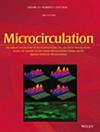Dysfunction of the lymphatic system following injury, disease, or cancer treatment can lead to lymphedema, a debilitating condition with no cure. Despite the various physical therapy and surgical options available, most treatments are palliative and fail to address the underlying lymphatic vascular insufficiency driving lymphedema progression. Stem cell therapy provides a promising alternative in the treatment of various chronic diseases with a wide range of therapeutic effects that reduce inflammation, fibrosis, and oxidative stress, while promoting lymphatic vessel (LV) regeneration. Specifically, stem cell transplantation is suggested to promote LV restoration, rebuild lymphatic circulation, and thus potentially be utilized towards an effective lymphedema treatment. In addition to stem cells, studies have proposed the administration of vascular endothelial growth factor C (VEGFC) to promote lymphangiogenesis and decrease swelling in lymphedema.
Here, we seek to combine the benefits of stem cell therapy, which provides a cellular therapeutic approach that can respond to the tissue environment, and VEGFC administration to restore lymphatic drainage.
Specifically, we engineered mesenchymal stem cells (MSCs) to overexpress VEGFC using a lentiviral vector (hVEGFC MSC) and investigated their therapeutic efficacy in improving LV function and tissue swelling using near infrared (NIR) imaging, and lymphatic regeneration in a single LV ligation mouse tail lymphedema model.
First, we showed that overexpression of VEGFC using lentiviral transduction led to an increase in VEGFC protein synthesis in vitro. Then, we demonstrated hVEGFC MSC administration post-injury significantly increased the lymphatic contraction frequency 14-, 21-, and 28-days post-surgery compared to the control animals (MSC administration) in vivo, while also reducing tail swelling 28-days post-surgery compared to controls.
Our results suggest a therapeutic potential of hVEGFC MSC in alleviating the lymphatic dysfunction observed during lymphedema progression after secondary injury and could provide a promising approach to enhancing autologous cell therapy for treating lymphedema.


